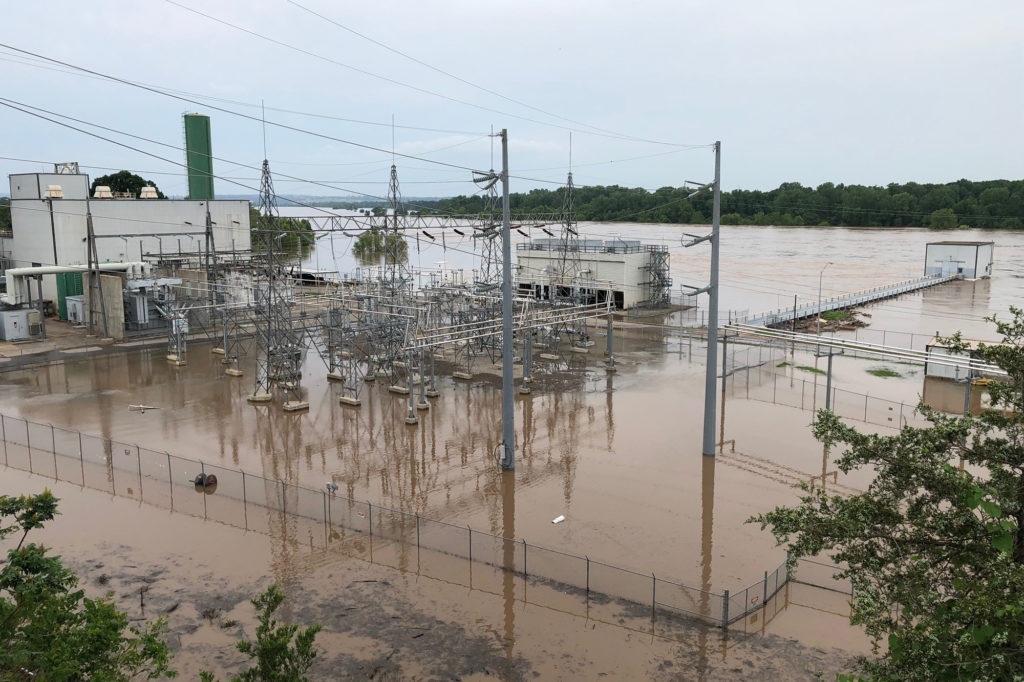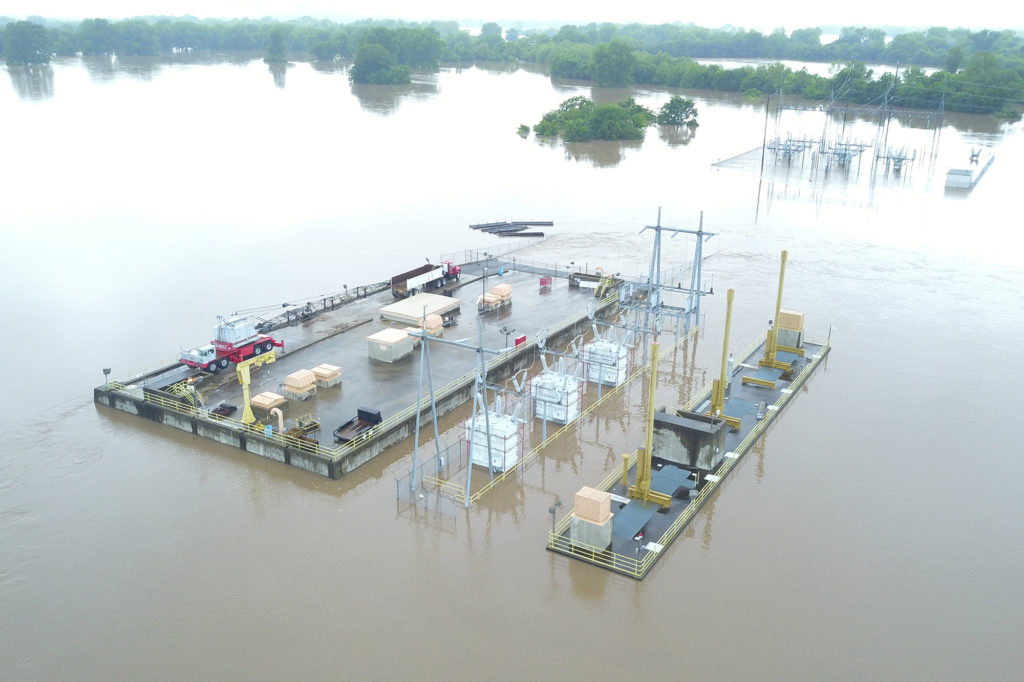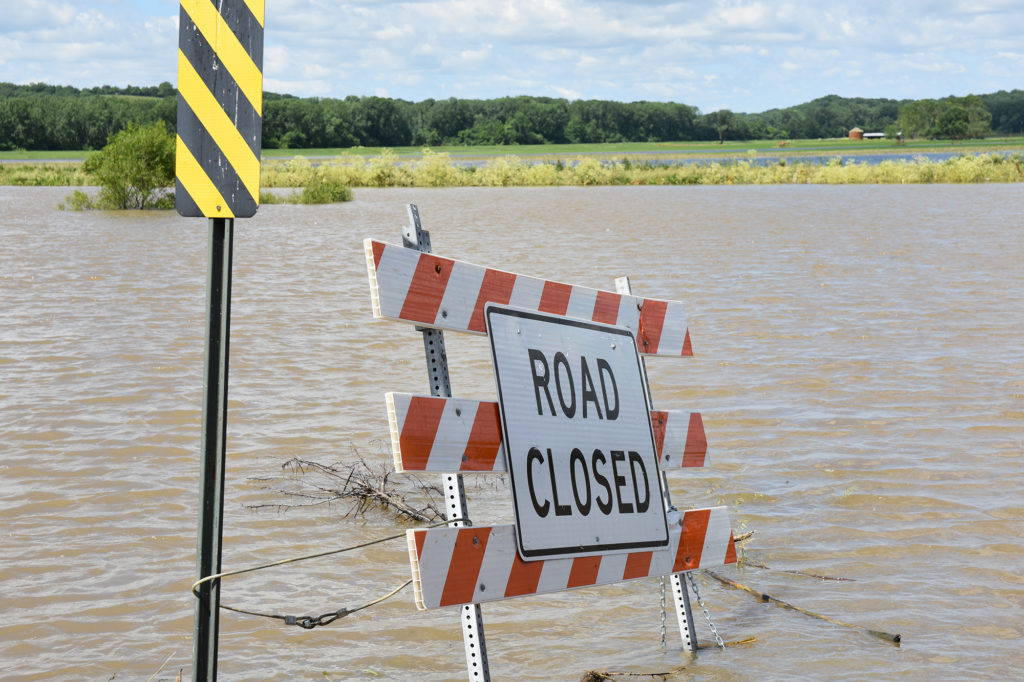
Updated: June 4, 2019
Electric cooperatives serving members along some of the nation’s most important rivers are facing some of the worst flooding in more than a quarter-century.
Co-op crews in at least six states have been working to minimize damage to their systems even as they remain committed to restoring service to flood-ravaged communities as quickly as possible.
Arkansas River
“People remember 1993 as a record year for flooding along the Arkansas River, and this is very close to that,” said Sid Sperry, director of public relations, communications and research for the Oklahoma Association of Electric Cooperatives.
A series of severe storms that spawned high winds, tornadoes and heavy rain continued throughout May, and National Weather Service forecasters have warned that conditions are ripe to sustain that pattern through at least early June.
Precautionary disconnections have been underway for weeks in low-lying areas where waterways have yet to crest, even as crews completed repairs needed after high winds and tornadoes ripped through some areas.
“While repairs to windstorm-damaged areas often begin as soon as conditions improve, flooding can last days or weeks,” said Sperry. “Once floodwaters subside, transformers and other equipment have to be repaired, and in many instances members have to hire licensed electricians to check their systems before service can be restored.”
That’s the situation facing hundreds of members of co-ops in parts of northeastern Oklahoma, where flooding in the Arkansas River watershed is now in its third week.
“Three of our co-ops serving members in the Tulsa metropolitan area and surrounding counties are dealing with the aftermath of flash flooding and major historic flooding along the Arkansas River,” said Sperry.

High water has been even more severe in parts of Arkansas, where Little Rock-based generation and transmission cooperative Arkansas Electric Cooperative Corp. shut down some hydroelectric facilities and one baseload power station for several days.
The Thomas B. Fitzhugh plant near Ozark, Arkansas, was built to withstand flooding and has been returned to service. The Arkansas River has crested near two of the G&T’s hydro facilities, but high water has isolated a third. Those sites will be placed back into operation once river conditions improve and engineers ensure they are operational.
Three Arkansas distribution co-ops have de-energized hundreds of meters due to high water in flood-prone areas, said Roedel. “We’re also actually looking at some areas for additional precautionary disconnects that are beyond normal flood-prone areas because of the historic water levels.”
Missouri River
In Missouri, Boone Electric Cooperative pulled its line crews from overdue seasonal construction and system work to help sandbag communities west and south of its headquarters.
“Our communities keep a close eye on the river, particularly our farmers with fields along the river,” said Todd Culley, general manager and CEO of Columbia, Missouri-based Boone EC.
“We got a call last week and they said, ‘we need some help, and we think we need it pretty quick,’ so we responded.”

While the larger rivers get much of the attention, smaller tributaries are also swollen beyond their banks following weeks of wet weather.
“Our co-ops have been pulling meters in flood areas for months, but it has gotten much worse over the last week,” said Jim McCarty, editor of Rural Missouri magazine and a spokesman for the Association of Missouri Electric Cooperatives.
Some areas that were devastated by the 1993 flooding benefited from government buyouts, which eliminated much of the development in areas now inundated by high water, said McCarty. “After the flood of 1993, many [co-op] facilities were moved to higher ground, so that has helped.”

Mississippi River
Rainy weather and a delayed spring thaw have led to flooding in the Upper Midwest and high water levels along parts of the Mississippi, according to officials from several electric cooperative statewide associations.
“Illinois co-ops are monitoring the Mississippi River level closely and some have de-energized lines to a few members,” said Valerie Cheatham, vice president of communications for the Illinois Association of Electric Cooperatives.
The U.S. Army Corps of Engineers could announce mandatory evacuations in some co-op-served communities this week, leading to more precautionary disconnections in low-lying areas, Cheatham said. “Since the flood of 1993, our co-ops have far less members living in the bottom areas of the river.”
Co-ops serving members farther south in Mississippi and Louisiana will continue watching the river for the next few weeks.
Derrill Holly is a staff writer at NRECA.